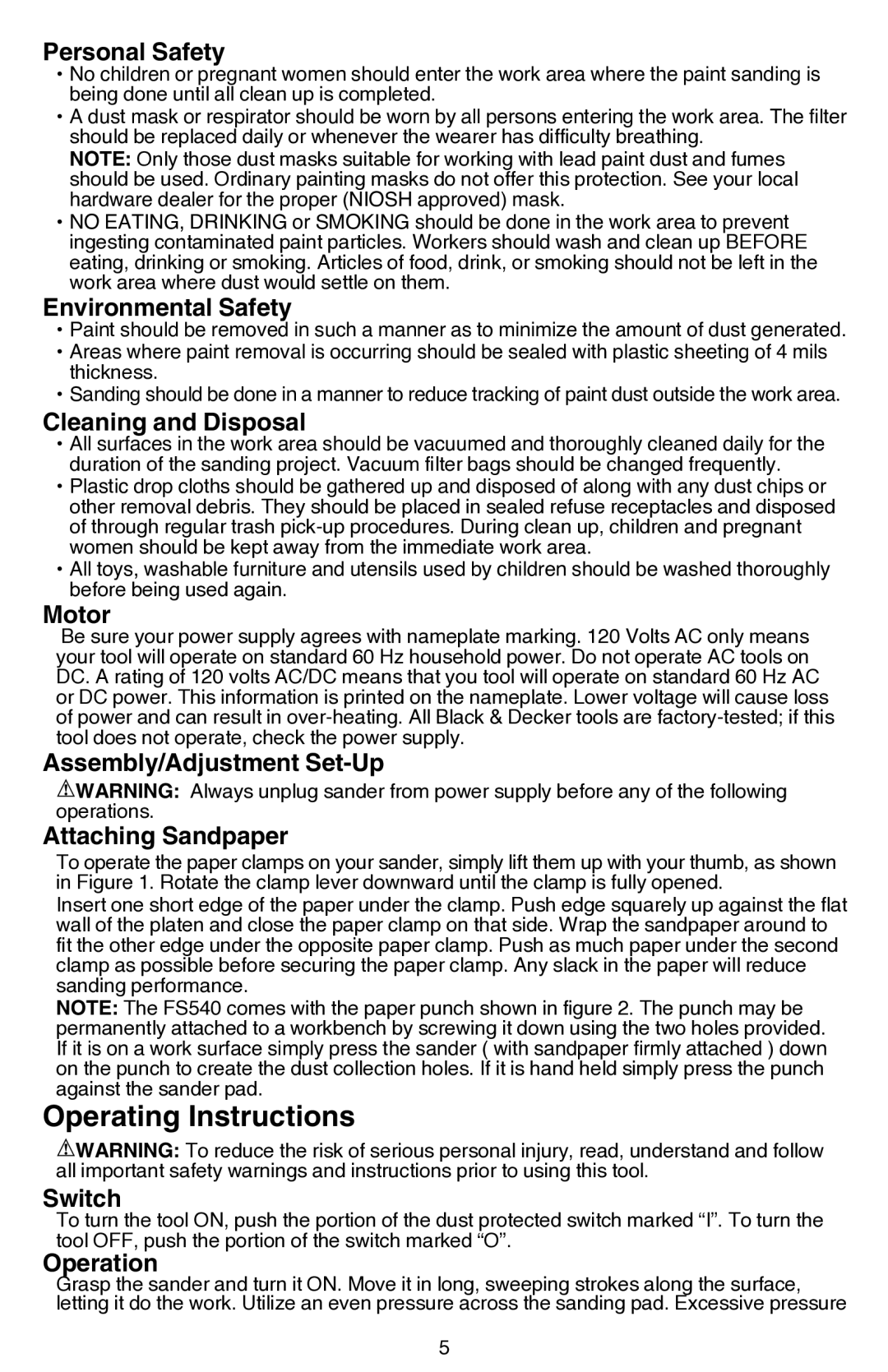Personal Safety
• No children or pregnant women should enter the work area where the paint sanding is being done until all clean up is completed.
• A dust mask or respirator should be worn by all persons entering the work area. The filter should be replaced daily or whenever the wearer has difficulty breathing.
NOTE: Only those dust masks suitable for working with lead paint dust and fumes should be used. Ordinary painting masks do not offer this protection. See your local hardware dealer for the proper (NIOSH approved) mask.
• NO EATING, DRINKING or SMOKING should be done in the work area to prevent ingesting contaminated paint particles. Workers should wash and clean up BEFORE eating, drinking or smoking. Articles of food, drink, or smoking should not be left in the work area where dust would settle on them.
Environmental Safety
• Paint should be removed in such a manner as to minimize the amount of dust generated.
• Areas where paint removal is occurring should be sealed with plastic sheeting of 4 mils thickness.
• Sanding should be done in a manner to reduce tracking of paint dust outside the work area.
Cleaning and Disposal
• All surfaces in the work area should be vacuumed and thoroughly cleaned daily for the duration of the sanding project. Vacuum filter bags should be changed frequently.
• Plastic drop cloths should be gathered up and disposed of along with any dust chips or other removal debris. They should be placed in sealed refuse receptacles and disposed of through regular trash
• All toys, washable furniture and utensils used by children should be washed thoroughly before being used again.
Motor
Be sure your power supply agrees with nameplate marking. 120 Volts AC only means your tool will operate on standard 60 Hz household power. Do not operate AC tools on DC. A rating of 120 volts AC/DC means that you tool will operate on standard 60 Hz AC or DC power. This information is printed on the nameplate. Lower voltage will cause loss of power and can result in
Assembly/Adjustment Set-Up
![]() WARNING: Always unplug sander from power supply before any of the following operations.
WARNING: Always unplug sander from power supply before any of the following operations.
Attaching Sandpaper
To operate the paper clamps on your sander, simply lift them up with your thumb, as shown in Figure 1. Rotate the clamp lever downward until the clamp is fully opened.
Insert one short edge of the paper under the clamp. Push edge squarely up against the flat wall of the platen and close the paper clamp on that side. Wrap the sandpaper around to fit the other edge under the opposite paper clamp. Push as much paper under the second clamp as possible before securing the paper clamp. Any slack in the paper will reduce sanding performance.
NOTE: The FS540 comes with the paper punch shown in figure 2. The punch may be permanently attached to a workbench by screwing it down using the two holes provided. If it is on a work surface simply press the sander ( with sandpaper firmly attached ) down on the punch to create the dust collection holes. If it is hand held simply press the punch against the sander pad.
Operating Instructions
![]() WARNING: To reduce the risk of serious personal injury, read, understand and follow all important safety warnings and instructions prior to using this tool.
WARNING: To reduce the risk of serious personal injury, read, understand and follow all important safety warnings and instructions prior to using this tool.
Switch
To turn the tool ON, push the portion of the dust protected switch marked “I”. To turn the tool OFF, push the portion of the switch marked “O”.
Operation
Grasp the sander and turn it ON. Move it in long, sweeping strokes along the surface, letting it do the work. Utilize an even pressure across the sanding pad. Excessive pressure
5
